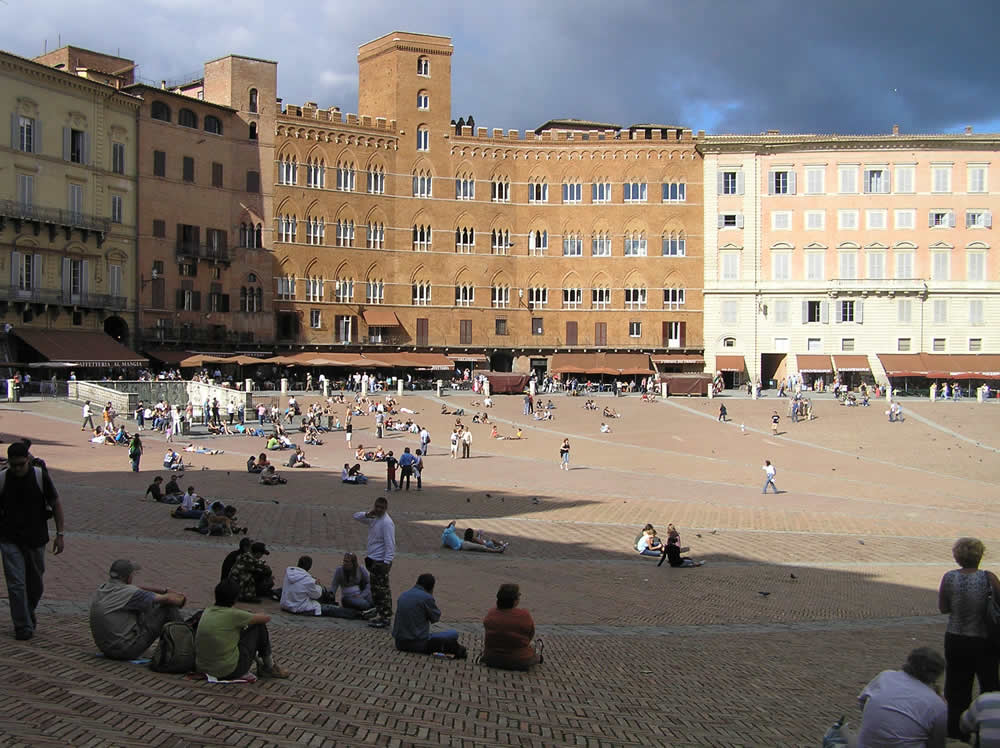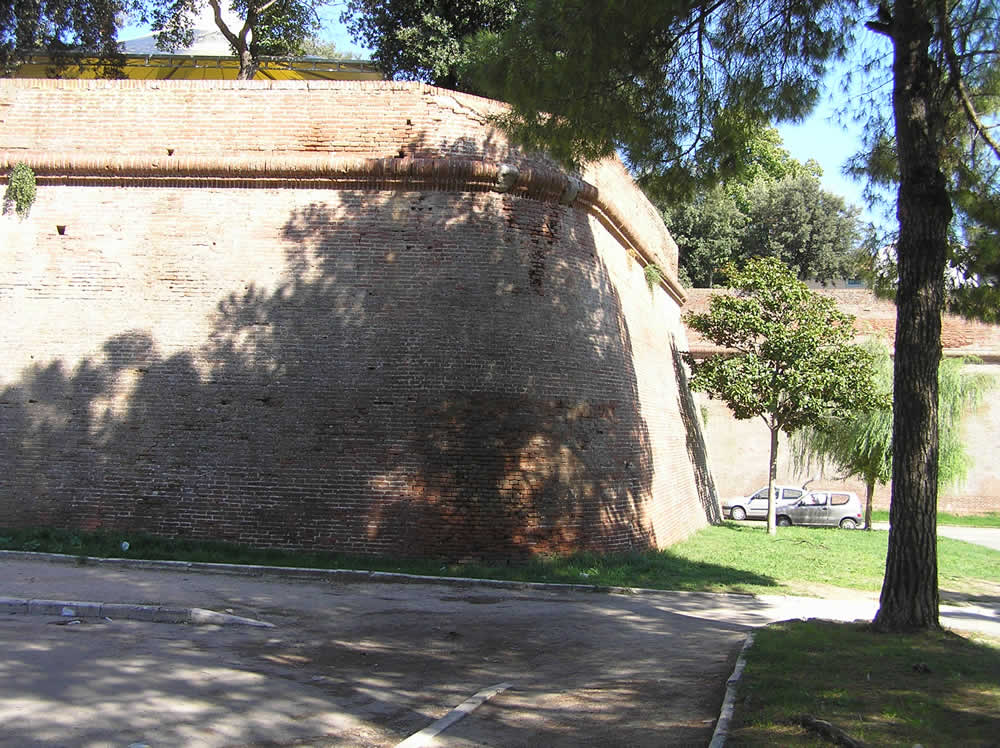Carrara (66,000 inhabitants, 100 meters above sea level) is known throughout the world for its precious marble (Marmo di Carrara) which is extracted from quarries in the nearby Apuan Alps. The city which is the main Italian center for the extraction of marble is of medieval origin. The marble quarries on the Apuan Alps were […]
Category: Cities

The Cathedral of Pisa, dedicated to Santa Maria Assunta, is the main example of a religious building in the Pisan Romanesque style, it was built between 1064 and 1118, the year of its consecration, and expanded in the following centuries. Various architects worked on its construction including Buscheto, Rainaldo, Guglielmo and Biduino. A MASTERPIECE OF […]

The Piazza del Duomo of Pisa or Campo dei Miracoli is the main tourist attraction of this Tuscan city. The square has been one of the UNESCO World Heritage Sites since 1987, overlooked by buildings of great artistic value such as the Duomo (Cathedral of Santa Maria Assunta), the Baptistery (dedicated to St. John the […]

Important historical city of Tuscany, Lucca has just over 80,000 inhabitants and is one of the most popular tourist destinations in the region. The city is located in the center of a flat area where the Serchio river flows. Lucca preserves a historic center of great value surrounded by a wonderful circle of walls over […]

Pistoia is a city of over ninety thousand inhabitants located in a flat area (67 meters above sea level) in the center of a vast plain crossed by the Ombrone river. The city is located between the Apennines and Monte Albano. Among the activities taking place around the city, the most famous is that of […]

The city of Siena is situated in a hilly area in the center of the Tuscany region. Siena is located approximately 350 meters above sea level and enjoys a type of Mediterranean climate, characterized by hot and relatively dry summers and relatively cold and wet winters. Rainy season for Siena is however autumn during which […]
Video: Pisa

Pisa was an important maritime town that between the eleventh and twelfth centuries expanded its trade and its conquests. The Republic of Pisa at that time controlled the Corsica, the Balearic Islands and part of Sardinia, businesses and commercial colonies of Pisa stretched from Spain to Tunisia, to Southern Italy, to the Byzantine Empire, up to […]

Florence is an absolute masterpiece of Renaissance art. The city is one of the most famous and known tourist destinations in the world. Here are unique masterpieces such as the dome of Santa Maria del Fiore, built by Filippo Brunelleschi. Brunelleschi’s dome has been for hundreds of years the largest dome in the world, and has been […]

The Medici Villas are among the most original architectural structures of the Italian Renaissance. These villas were built between the fifteenth and seventeenth century by the lords of Florence, the Medici. The Medici Villas represent a kind of new building for its time, which differed both from the typical farms from the stately castles. The […]

Pisa is located a few kilometers from the coast of the Tyrrhenian Sea, its location near the sea makes the climate of the city temperate Mediterranean. The proximity to the sea has beneficial effects on the climate of the city, in fact mitigates the heat during the summer months and makes milder winters than the […]

Prato with almost two hundred thousand inhabitants is after Florence the most populous city in Tuscany and an important industrial center, especially of the textile industry, in particular yarns, fabrics and machinery. The city is located in a flat area at 61 meters above sea level along the Bisenzio valley and is the capital of […]

The current museum complex of Santa Maria della Scala, was one of the first European hospitals expressly built to accommodate pilgrims traveling along the Via Francigena, and support the poor and abandoned children. The complex is located opposite the facade of the Duomo in Siena, and its creation is due to the canons of the […]

The Medici Fortress of Siena was built starting from 1560 by order of the future Grand Duke of Tuscany Cosimo I de’ Medici. This fortress is located in the heart of Siena, and was built where the old Spanish fortress was destroyed by the Sienese in 1552. The fortress was designed by Baldassarre Lanci and […]

It is said Siena and you immediately think of the Palio. It’s almost impossible, in fact, speaking of this charming Tuscan town and not remember this competition on horseback of medieval origins, unique in the world for participation, passion and intensity with which it is lived by all Sienese. So engaging is the climate that you […]

Siena is one of the best preserved historical cities of Tuscany. Ancient medieval town built on three hills, is still surrounded by walls. The whole city, built around the Piazza del Campo, was conceived as a work of art that blends into the landscape of the Crete Senesi. Siena is a medieval jewel made of […]

Grosseto (80,000 inhabitants (2008), 10 meters above sea level) is the most important town of the Maremma, lies at the heart of the vast flood plain of the river Ombrone a short distance from the sea. Grosseto is situated in Southern Tuscany, about 12 km from the sea in the Ombrone alluvional valley. HISTORY The origins […]

The frescoes of the Legend of the True Cross by Piero della Francesca Basilica of San Francesco faces on the square of the same name that is located halfway between the cathedral square and the walls, in the center of the square is the monument to Vittorio Fossombroni. The Basilica of San Francesco is characterized […]

Piazza Grande, the most beautiful public square in Arezzo, is opened in the heart of the medieval city, the square is a mix of buildings of several ages that gives an evocative and scenographic aspect. It has a characteristic trapezial shape, with a strongly tilted surface, the square was the ancient Platea Communis, risen around […]

The city of Arezzo, located at the confluence of four river valleys, was an important Etruscan and Roman town. The Archaeological Museum, located in a former Olivetan monastery, built on part of the Roman Amphitheatre houses many relics of that period. Guido Tarlati, bishop of Arezzo, in the first half of XIV century, transformed the city […]
The Church of Santa Maria del Carmine was begun in 1268, and unfortunately damaged by fire in 1771. The interior has a nave, and was re-decorated in the eighteenth century after the fire. Fortunately the fire spared the absolute masterpiece of the church which requires anyone visiting Florence a visit to this church: the beautiful […]

The great square on which overlooks the Basilica of Santa Croce is surrounded by some buildings of historical interest such as the Palace dell’Antella (seventeenth century) – with beautiful frescoes by Giovanni da San Giovanni and Filippo Napoletano – and the Palazzo Cocchi Serristori (XVI century) by Baccio d’Agnolo. Basilica of Santa Croce is the […]

Michelangelo Buonarroti’s Tomb is the work of Vasari (1570). The tomb is located at the beginning of the right nave of the church of Santa Croce, as soon as you cross the main door of the Basilica. Above the tomb there are three sculptures that represent the personifications of Painting, Sculpture and Architecture. These figures […]

The Vasari Corridor it’s a covered way which connects Palazzo Vecchio (Old Palace) to Palazzo Pitti (Pitti Palace), passing through the Galleria degli Uffizi (Gallery of the Uffizi) and crossing the River Arno above the Ponte Vecchio (Old Bridge). The Corridoio Vasariano, more than one kilometer long and 3.50 mts large, was constructed, in only […]

Among the statues present today in the Loggia della Signoria or dei Lanzi, the Perseus by Benvenuto Cellini is probably the most important and extraordinary work from an artistic and technical point of view. This statue is considered a masterpiece of Italian Mannerist sculpture and one of the most famous statues in Piazza della Signoria […]

The Loggia della Signoria, also called Loggia dei Lanzi because of the guard of German mercenaries (lansquenets) who stood here in the sixteenth century, was built in the fourteenth century thanks to the work of Simone di Francesco Talenti, Lorenzo di Filippo and Benci di Cione. This structure was originally used to host indoor public […]
